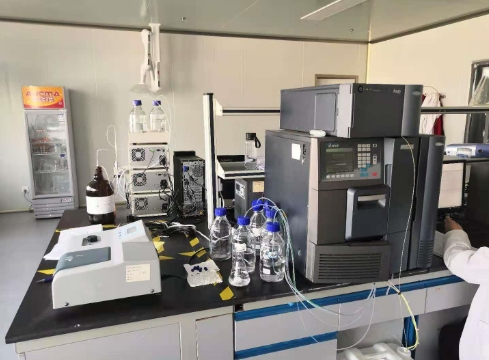1. What impurities are there in the non-HPLC purified ones?
A: Modified peptide and non-modified peptide impurities in crude and desalted modified peptide: such as non-full-length modified peptide and some raw materials such as DTT, TFA, etc.
2. What impurities are purified by HPLC?
A: The modified peptide purified by HPLC will still have a lot of impurities, and the impurities are usually short peptides and a little TFA.
3. How long is it suitable?
A: THE synthesis of modified peptide must consider the length of the modified peptide, charge, hydrophilicity and hydrophobicity and other factors. The longer the total length, the lower the purity and yield of the crude product, and the higher the difficulty of purification and the probability of difficulty in synthesis. However, there is no way to change the sequence of the functional domain of the modified peptide, but in order to complete the synthesis of the modified peptide, sometimes only some auxiliary amino acids can be added in the upstream and downstream of the functional domain to improve the solubility and hydrophobicity of the modified peptide. If the modified peptide is too short, there may be problems in the synthesis. The first problem is that the synthesized modified peptide has certain difficulties in the post-processing process. The modified peptide within 5 peptides usually has hydrophobic amino acids, otherwise the post-processing is difficult. Modified peptides below 15 amino acid residues can generally be obtained with satisfactory yield and yield.
Some questions and answers about the solubility of modified peptides
4. How to judge the solubility of the modified peptide from the sequence?
(1) The modified peptide containing a high proportion of hydrophobic amino acids such as Leu,Val,IIe,Met,Phe and Trp is not easily soluble in aqueous solution or almost insoluble. This amino acid can be problematic either in purification or synthesis.
(2) the proportion of hydrophobic amino acids under normal conditions < The proportion of charged amino acids can reach up to 20%. If the N or C of the modified peptide is short, the increase of polar amino acids can also improve the solubility.
5. Why is it difficult to synthesize Cys,Met, or Trp?
A: Modified peptides containing Cys,Met, or Trp cannot be synthesized, and high purity products are difficult to obtain. This is mainly due to the fact that these groups are less stable and prone to oxidation. Use and storage of these modified peptides requires special care to prevent repeated opening of the lid.
6, why some synthetic yield or purity will be very low?
A: There is a considerable difference between the synthesis of modified peptides and the synthesis of primers. There are very few primers that cannot be synthesized, but there are often modified peptides that cannot be synthesized. Such as Val, Ile, Tyr and Trp, Leu, Phe, Gln, and Thr amino acid near or loop, modified peptides cannot stretch dissolved in the synthesis process, synthetic efficiency is lower. The efficiency of synthesis and the purity of the product are very low in the following cases, such as: repeat Pro,Ser-Ser, repeat Asp, four consecutive Gly, etc.
7. How is it purified?
A: Modified peptides are generally purified by reversed-phase column (such as C8, C18, etc.) at 214nm. The buffer system is generally a solution containing TFA, pH2.0. BufferA contained 0.1%TFAinddH2O, and BufferB contained 1%TFA/ACN/pH2.0. It was dissolved in BufferA before purification; If the solution is not satisfactory, dissolve with BufferB, then dilute with BufferA; For highly hydrophobic modified peptides, sometimes a little FormicAcid or acetic acid is added.
Post time: Feb-27-2024

